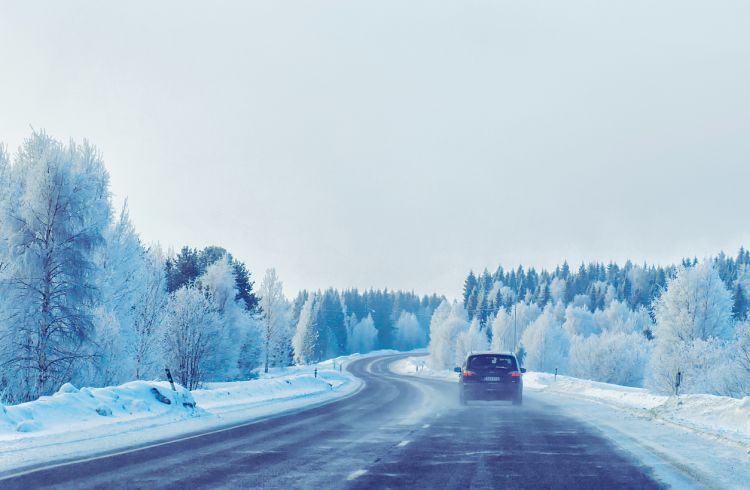Driving in Finland: Tips & Advice for Safer Road Travel
Driving in Finland can be a great way to see the country but there are things to consider before you hop behind the wheel and hit the open road.
 Photo © istock.com/romanbabakin
Photo © istock.com/romanbabakin
Driving around Finland can be one of the best ways to explore the country and see some of the most spectacular scenery in the world. The safety of Finnish roads has improved dramatically over the past 10 years, and this is reflected in the road statistics with the number of fatalities decreasing every year. Road conditions are good and the country has a great network of roads.
Being aware of the road conditions and heeding warning signs for wildlife in the area will go a long way to ensuring you get to your destination safely.
- Hiring a Car in Finland
- Driving Tips for Finland
- Speed Limits
- Be Prepared for Winter
- Hazards on the Road
- Roadside Scams in Finland
Hiring a car in Finland
In Finland, you must be 18 years to drive however you need to be 21 years old to hire a car. It's compulsory to carry all necessary documents on you while driving in Finland such as a valid driver's license, passport, insurance documents and registration papers. The International Driving Permit is recognized but not essential. Before you drive off, do a thorough check of the car.
By law, it's compulsory to have the following in your vehicle:
-
Warning triangle
- First aid kit
- Fire extinguisher
- Spare bulbs
- Torch
- Reflective jacket or vest. This is necessary if you get out of your car in the event of a breakdown, at night if you pull over on the side of the road particularly in winter.
Driving tips for Finland
To start off, having dipped headlights on is compulsory at all times, including if you are stationary on the side of the road.
Other drivers may flash their lights at you while passing you. No, they aren't warning you about the cops down the road, it's more likely to be a moose or something else so take a bit off your speed and be prepared to stop.
It's an offense to leave your engine idling while stationary for more than 2 mins (4 mins if the temperature is below 5°F (-15°C)). Unless of course you are stuck in an unavoidable traffic jam.
Finland has very tough policies on drinking and driving. It's considered a serious offense and you can expect a lengthy prison sentence if caught.
The drink drive limit in Finland is 50 milligrams of alcohol in 100 milliliters of blood (lower than many other countries).
It's also an offense to use a cell phone while driving unless you are using it via a hands-free kit.
In the event of an emergency or accident, call 112.
Speed limits
In Finland, all road signs are in kilometers per hour.
-
In residential and built up areas - 31 mph (50km/h)
-
Outside built up and residential areas - 50mph (80km/h)
-
On the motorways - 75mph (120km/h)
-
In summer, you can travel up to 62mph (100km/h) on highways, in winter it's 50mph (80km/h).
There are both mobile and fixed speed cameras in Finland so slow down if you don't want to donate your travel funds to the local government.
In 2015, a Finnish man was fined 54,024 euros (~US$58,000) for traveling 64 mph (103km/h) in a 50mph (80km/h) zone!
Be prepared for winter
Driving through Finland during winter can be like driving through a Christmas card scene; snow covered trees, mountains, houses, frozen lakes snow-lined roads.
The days are so short you're driving mostly in the dark and the weather conditions can reduce visibility significantly. If you aren't confident driving in snow and darkness, it's probably best to choose another form of transport to get around Finland. In some parts of the country, it can be several hours until you see the next town after the one you left.
Between 1st December and 31st March, it's compulsory to have winter tyres (preferrably studded) on your vehicle. Snow chains are illegal. Black ice is a real hazard during winter so it's important to take this into account while out on the road as braking times may be longer and sliding can happen on curved parts of the road. Take it easy when driving around corners and curves. Drive with caution and keep a longer distance than normal between you and the vehicle in front.
Engine heaters, while not compulsory in winter, are strongly recommended. It's also a good idea to carry some food and water with you plus know where the nearest town or accommodation is in the event of the weather turning nasty.
If you do happen to pull over to check out the scenery or take photos, make sure you have pulled off the road and out of the way of traffic.
Hazards on the road
Be aware that at night, including in large cities, it's common practice to turn off traffic lights at major intersections early in the evening.
In spring and autumn, especially around sunrise and sunset, animals such as moose, reindeer and elk can wander onto the road even on major roadways.
According to the Finnish Interior Ministry, there are roughly 1500 collisions with moose every year, resulting in 10 deaths and 300 injuries.
The areas with the highest rates of moose and vehicle collisions are mostly the central regions, from the coast of Ostrobothnia, through Central Finland and down to Southeast Finland.
Should you, unfortunately, have a collision with an animal, you are obliged to call 112 so local police can come out and assess the situation in case the animal can be treated or it needs to be put to sleep.
Roadside scams in Finland
Fake police have become increasingly a problem in Finland, with locals and travelers alike being exploited. Legitimate Finnish Police can issue on the spot fines however they will never ask for on the spot payment.
Also be aware of men waving down cars after supposedly having "trouble" with their car. If you stop, they then start asking for money for petrol or trying to sell some fake jewelry.
Related articles
Simple and flexible travel insurance
You can buy at home or while traveling, and claim online from anywhere in the world. With 150+ adventure activities covered and 24/7 emergency assistance.
Get a quote
2 Comments
There was disinformation, what comes to compulsory stuff you need to have in your vehicle: Only the Warning triangle is compulsory, you DON'T need to have First Aid Kit, Fire Extinguisher, Spare Bulbs, Torch or Reflective jacket.
I would also add the fact that on motorways the speed limits are reduced from 120 km/h to 100 km/h during winter.
One important note is that modern cars have DLR's (Daytime Running Lights). When DLR's are on the tail lights are not illuminated. Having the light switch on Auto it does switch the headlights and tail lights on in dark conditions but not always when the lights are necessary (rain, fog etc.). So please switch the light switch always on headlights on position so you or nobody else need to worry that you are seen in the dark.